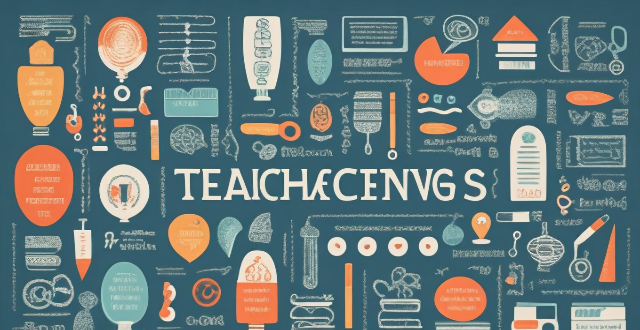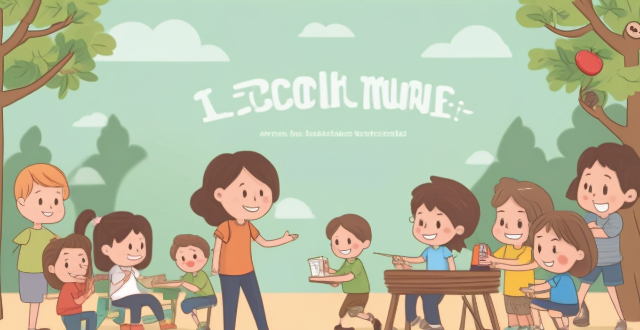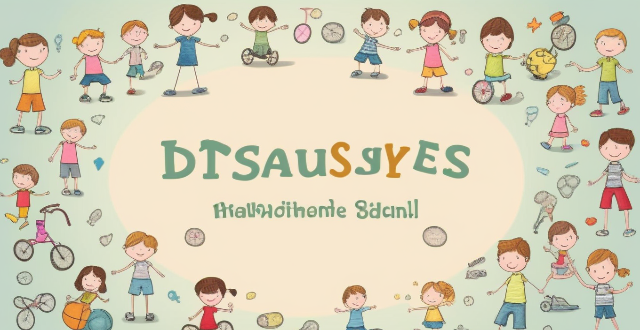Teaching Skill

How can artificial intelligence be integrated into classroom teaching ?
Artificial intelligence (AI) can revolutionize classroom teaching by enhancing student engagement, personalizing learning experiences, and improving educational outcomes. Adaptive learning systems create personalized learning pathways and provide real-time feedback, while intelligent tutoring systems offer individualized coaching and progress tracking. Automated grading and assessment streamline the evaluation process, virtual learning assistants provide round-the-clock support, and data analytics tools inform instructional decisions. AI-powered group projects and peer feedback mechanisms facilitate collaborative learning environments. Integrating AI into classroom teaching has the potential to transform education by creating more engaging, personalized, and efficient learning experiences for all students.

How can I improve my teaching skills as a fitness instructor ?
This article provides tips on how to improve teaching skills as a fitness instructor. It suggests developing knowledge of fitness and exercise science, enhancing communication skills, creating engaging workouts, and continuously evaluating and improving teaching methods. The article emphasizes the importance of staying up-to-date with current research and best practices, practicing active listening and empathy, designing well-rounded fitness programs, fostering a supportive community within classes, seeking feedback from clients, and reflecting on one's own performance. By following these tips, fitness instructors can provide higher quality service to their clients and achieve better client outcomes.

Can you discuss the impact of personalized learning on innovative teaching methods ?
Personalized learning, an educational approach that tailors instruction to individual students' needs and preferences, has significantly influenced innovative teaching methods. This approach emphasizes a student-centered learning environment, flexible use of technology and space, and data-driven decision making. As a result, teaching methods have evolved to include differentiated instruction, mastery-based assessments, self-directed learning opportunities, and the integration of technology. These changes aim to create a more engaging, effective, and personalized educational experience for each student, fostering deeper understanding and higher retention rates.

What are the best practices for teaching children about money management and savings ?
Teaching children about money management and savings is an essential life skill that can help them develop good financial habits. Here are some best practices for teaching children about money management: 1. Start early: Even toddlers can understand basic concepts like saving and spending. Use everyday opportunities to talk about money and its value. 2. Lead by example: Children learn by example, so it's important to model good financial habits yourself. Show them how you budget, save, and make decisions about spending. 3. Use allowances wisely: Giving your child an allowance is a great way to teach them about money management. Encourage saving, teach spending, and introduce giving as part of their allowance. 4. Play money games: Board games and online games can be fun and educational at the same time. Some popular ones include Monopoly, The Game of Life, and PiggyBot. 5. Involve them in family finances: Involving your children in family finances can help them understand the real-world implications of money management. Have them help you create a budget, go grocery shopping with you, and talk to them about bills and expenses. Remember to be patient, consistent, and positive when teaching children about money management and savings. With these best practices, your child will develop good financial habits that will serve them well throughout their life.

What role does collaborative learning play in innovative teaching approaches ?
The text discusses the importance of collaborative learning in innovative teaching approaches, emphasizing how it enhances student engagement, promotes critical thinking, develops communication skills, encourages autonomy and self-direction, and fosters teamwork and leadership skills.

How can teachers effectively integrate multimedia resources into their innovative teaching methods ?
Integrating multimedia resources into teaching methods can greatly enhance the learning experience for students. Teachers should identify learning objectives, choose appropriate tools, create interactive lessons, encourage student participation, integrate technology in assessments, provide access to online resources, and continuously evaluate and update their methods. This approach ensures that teaching remains innovative and engaging for students.

What are the benefits of teaching children about climate change ?
Teaching children about climate change is crucial for their future, empowering them to take action and make a difference. It enhances their awareness, critical thinking skills, environmental stewardship, innovation, preparation for future careers, empathy, responsibility, healthy habits, resilience, and interest in science and technology. This education can lead to informed decision-making, problem-solving abilities, responsible behavior towards the environment, and a sense of global citizenship. By teaching children about climate change, we are preparing them to confront one of the most significant challenges facing our planet.

Can nutrition affect an athlete's skill level ?
Nutrition is vital for athletes' overall well-being and performance, including skill enhancement, recovery, and injury prevention. It affects cognitive function, physical performance, and recovery, ultimately influencing an athlete's skill level. A balanced diet with proper nutrients can help athletes reach their full potential and succeed in their sports.

What are some innovative teaching methods that can enhance student engagement ?
Innovative teaching methods, including Project-BasedInnovative teaching methods, including Project-Basedroom, Gaming and Simulation Gaming and Simulations, Peer Teaching and Tutoring, Technology Integration, and Service Learning, are designed to enhance student engagement by fostering critical thinking, problem-solving, collaboration, and real-world application of knowledge. These approaches aim to make learning more interactive, relevant, and enjoyable for students, ultimately contributing to their academic success and personal growth.

Can playing multiple sports help in skill development ?
Participation in multiple sports can enhance overall athleticism and skill development by improving physical attributes, reducing injury risk, developing transferable skills, and promoting mental toughness. It also offers social benefits such as expanded networks and increased opportunities for exposure. While specialization has its advantages, playing multiple sports can help athletes become well-rounded competitors.

How important is rest and recovery in skill enhancement ?
The text discusses the importance of rest and recovery in the process of skill enhancement. It highlights the cognitive and physical benefits of taking breaks, such as improved mental clarity, memory consolidation, muscle recovery, and injury prevention. The practical implications include avoiding burnout, enhancing performance, and strategies for incorporating rest into practice schedules. Overall, the text emphasizes that rest is a crucial component of long-term skill development and should be given equal consideration alongside deliberate practice and training regimens.

What are some innovative methods for teaching climate change in schools ?
Innovative Methods for Teaching Climate Change in Schools Climate change is a pressing issue that requires innovative approaches to teaching. Here are some methods that can help engage students and promote critical thinking: 1. Interdisciplinary Learning 2. Project-Based Learning (PBL) 3. Service Learning 4. Technology Integration 5. Inquiry-Based Learning 6. Field Trips and Experiential Learning

How can team sports help in individual skill development ?
Team sports contribute significantly to individual skill development by improving communication skills, enhancing leadership abilities, increasing self-confidence, bettering time management, improving social skills, promoting physical fitness and coordination, providing opportunities to learn from mistakes, and fostering adaptability.

How do I choose a tennis training camp that fits my skill level ?
Choosing a tennis training camp that fits your skill level can significantly improve your game. Here are some tips on how to select the right camp: 1. Assess your current skill level by considering your experience, strengths and weaknesses, and fitness level. 2. Research different camps that offer programs specifically designed for your skill level using online directories, social media groups, and reviews from previous attendees. 3. Check the coaches' qualifications and experience, including their credentials, coaching philosophy, and track record of working with players at your skill level. 4. Consider the quality of the camp's facilities and amenities, such as well-maintained courts, access to equipment, and onsite amenities like locker rooms and dining areas. 5. Evaluate the camp's reputation and success rate by reading reviews, asking for referrals, and contacting the camp directly to learn more about their success stories.

Is speed reading a natural ability or a skill that can be learned ?
Speed reading is a topic of interest for many individuals who wish to improve their reading efficiency and comprehension. The question arises whether speed reading is a natural ability that some people possess, or if it is a skill that can be learned and developed through practice and training. While there may be some individuals who possess a natural ability for speed reading, it is generally accepted that speed reading is a skill that can be learned and improved upon through practice and training. By employing specific techniques and strategies, anyone can enhance their reading speed and comprehension, ultimately increasing their productivity and knowledge acquisition.

What are some effective strategies for teaching water safety to children ?
Water safety is an essential skill that every child should learn, especially during the summer months when they are more likely to be around water. Here are some effective strategies for teaching water safety to children: Start early, set clear rules, use visual aids, practice makes perfect, role playing, stay close and supervised, teach risk assessment, and be a good example.

How do home teaching strategies impact a child's academic performance ?
Home teaching strategies refer to the methods and techniques parents use to support their children's learning outside of school. These strategies can have a significant impact on a child's academic performance, as they provide additional opportunities for learning and help reinforce concepts taught in the classroom. In this response, we will explore the various home teaching strategies and how they influence a child's academic success. Parents play a crucial role in encouraging and motivating their children to learn. By showing interest in their child's education and expressing positive expectations, parents can help build their child's confidence and self-esteem. This, in turn, can lead to increased engagement in learning activities and better academic performance. Parents should set clear goals and expectations for their children's academic achievement. This helps children understand the importance of education and provides them with a sense of direction. When parents establish high but realistic expectations, children are more likely to strive for excellence and achieve better results. Creating a supportive learning environment at home is essential for fostering academic success. Parents should ensure that their children have a quiet, well-lit space for studying, as well as access to necessary resources such as books, computers, and educational software. Additionally, parents should establish regular study routines and minimize distractions during designated study times. Reading aloud to children is an effective way to improve their vocabulary, comprehension skills, and overall literacy development. Parents should make reading a daily habit, selecting age-appropriate books that align with their child's interests and reading level. Writing is an essential skill that requires consistent practice to develop. Parents can encourage their children to write by providing them with opportunities to express themselves through journaling, storytelling, or letter writing. Providing feedback on their writing efforts can also help children improve their writing skills over time. Mathematics is a subject that benefits from regular practice and exposure to new concepts. Parents can support their child's mathematical development by providing them with challenging problems and puzzles to solve. This not only helps reinforce math skills learned in school but also promotes critical thinking and problem-solving abilities. Inquiry-based learning involves allowing children to explore topics of interest through hands-on experiences and investigation. Parents can support this type of learning by providing resources such as science kits, nature exploration guides, or access to online resources that allow children to engage in inquiry-based activities. Home teaching strategies have a significant impact on a child's academic performance. By involving themselves in their child's education, setting goals and expectations, and providing a supportive learning environment, parents can help their children achieve academic success. Additionally, employing effective home teaching strategies such as reading aloud, encouraging writing practice, providing mathematical challenges, and promoting inquiry-based learning can further enhance a child's academic development.

What are some effective methods for teaching financial literacy to young adults ?
Financial literacy is a crucial life skill that every young adult should possess. It involves understanding how to manage money effectively, make informed financial decisions, and plan for the future. Here are some effective methods for teaching financial literacy to young adults: start with the basics, use interactive learning tools, encourage real-world practice, and provide access to financial professionals.

How do project-based learning and problem-solving activities fit into innovative teaching methodologies ?
Innovative teaching methodologies emphasize project-based learning (PBL) and problem-solving activities to engage students, foster critical thinking, and develop practical skills. PBL involves students in complex, meaningful projects that connect classroom learning with real-world scenarios, promoting deeper understanding, skill development, and motivation. Problem-solving activities challenge students to identify issues and find effective solutions, enhancing their critical thinking, decision-making, and resilience. Integrating PBL and problem-solving into innovative teaching involves identifying key concepts, designing relevant projects, incorporating problem-solving elements, providing resources, facilitating collaboration, scaffolding instruction, reflecting and evaluating, and assessing holistic performance. This approach creates a dynamic learning environment that prepares students for future challenges and fosters a love of lifelong learning.

What resources are available for parents to teach advanced subjects at home ?
Teaching advanced subjects at home can be a challenging task for parents. Resources such as online courses, textbooks, forums, and personal tutoring can make the process easier and more effective in teaching advanced subjects like math, science, and foreign languages.

How can sports help individuals develop leadership skills and personal growth ?
Participating in sports can help individuals develop leadership skills and foster personal growth by enhancing goal-setting, teamwork, resilience, decision-making under pressure, accountability, confidence building, discipline, physical health, emotional intelligence, and social interaction.

How do sports help in building character and personal growth ?
The text discusses the various ways in which sports can contribute to building character and promoting personal development. It highlights how sports can help develop discipline, promote teamwork, cultivate perseverance, encourage leadership, enhance self-esteem, teach adherence to rules, facilitate social interaction, improve physical health, and teach individuals how to handle pressure. The author emphasizes that the lessons learned through sports participation can translate into valuable life skills that are essential for success both in sports and beyond. Overall, the text suggests that sports offer an array of benefits that stretch far beyond physical fitness and play a significant role in shaping character and fostering personal growth.

How can augmented reality transform traditional teaching methods ?
Augmented Reality (AR) can revolutionize traditional teaching methods by providing an interactive and immersive learning experience. It can make learning more engaging, provide personalized feedback and guidance, facilitate group projects and remote collaboration, and provide contextual learning and virtual field trips. Incorporating AR into the classroom can create a more engaging and effective learning environment for students.

How do extracurricular activities contribute to the development of student leaders ?
**The Role of Extracurricular Activities in Nurturing Student Leaders** **Skill Development:** Extracurricular activities offer a platform for students to acquire and refine various skills, such as communication, teamwork, time management, and problem-solving. **Confidence Building:** Involvement in extracurricular activities often leads to increased self-assurance through taking initiative and overcoming challenges. **Interpersonal Abilities:** Engaging in extracurricular activities fosters key interpersonal abilities like networking, empathy, emotional intelligence, and influence. **Real-World Experience:** Extracurricular activities simulate real-world experiences where leadership is crucial, teaching organizational skills and adaptability. **Responsibility and Commitment:** Participation teaches responsibility and commitment through accountability and dedication to practice or training. **Conclusion:** Extracurricular activities serve as a laboratory for students to experiment with leadership styles, make mistakes, learn from them, and grow into well-rounded individuals ready to take on future challenges.

How can schools incorporate cultural diversity into their curriculum ?
Incorporating cultural diversity into the school curriculum is essential for fostering a more inclusive and understanding environment. Here are some ways schools can do so: 1. Multicultural Education Programs: Schools can introduce multicultural education programs that focus on teaching students about different cultures, traditions, and beliefs. This can include historical context, cultural celebrations, and guest speakers from diverse backgrounds. 2. Diverse Textbooks and Teaching Materials: Using textbooks and teaching materials that represent a variety of cultures, races, and religions can help students understand and appreciate diversity. This can include books written by authors from different cultural backgrounds, multicultural stories, and visual representation of people from different cultures. 3. Language Learning Programs: Providing language learning programs can help students gain a deeper understanding of other cultures. This can include foreign language classes, cultural exchange programs, and language immersion programs. 4. Cultural Field Trips: Organizing field trips to cultural museums, festivals, and events can provide students with firsthand experiences of different cultures. This can include museum visits, cultural festivals, and local business visits. 5. Culturally Responsive Teaching Strategies: Teachers should use culturally responsive teaching strategies that take into account the unique needs and backgrounds of their students. This can include personalized learning, relevant examples, and collaborative learning between students from different cultures.

What role do sports play in character building for children ?
The article discusses the various ways in which sports contribute to the overall personality development of children. Sports ensure physical health and well-being, teach valuable life skills such as teamwork, leadership, communication, and goal setting, impact emotional development by boosting self-esteem, teaching resilience, and handling pressure, provide opportunities for socialization, and play a crucial role in moral development by instilling values such as integrity, respect, and responsibility. The author concludes that sports are not just about physical fitness but are powerful tools for character building in children.

How can educational psychology contribute to effective teaching strategies ?
The article discusses how educational psychology can contribute to effective teaching strategies. It emphasizes the importance of understanding student diversity, promoting active learning, building positive relationships, and assessing and addressing learning difficulties. By applying these principles, teachers can create a supportive and engaging learning environment that fosters student growth and success.

How does sports improve social skills ?
Sports significantly enhance social skills through teamwork, confidence-building, dealing with diversity, interpersonal development, and leadership. Participation fosters cooperation, communication, shared responsibility, achievement, resilience, public performance, acceptance, adaptability, respect, networking, empathy, conflict resolution, role assumption, motivation, and decision-making. These skills are transferable to various aspects of life, making sports a valuable platform for personal growth and social interaction.

What are some best practices for teaching multicultural education ?
Teaching multicultural education is essential for promoting understanding, respect, and appreciation for diverse cultures. Best practices include incorporating diverse perspectives into the curriculum, promoting empathy and respect, using inclusive language, celebrating cultural diversity, fostering collaboration and dialogue, addressing bias and stereotyping, integrating technology and social media, and continuous professional development. By implementing these practices, teachers can create an inclusive and harmonious classroom environment that values and appreciates cultural differences.